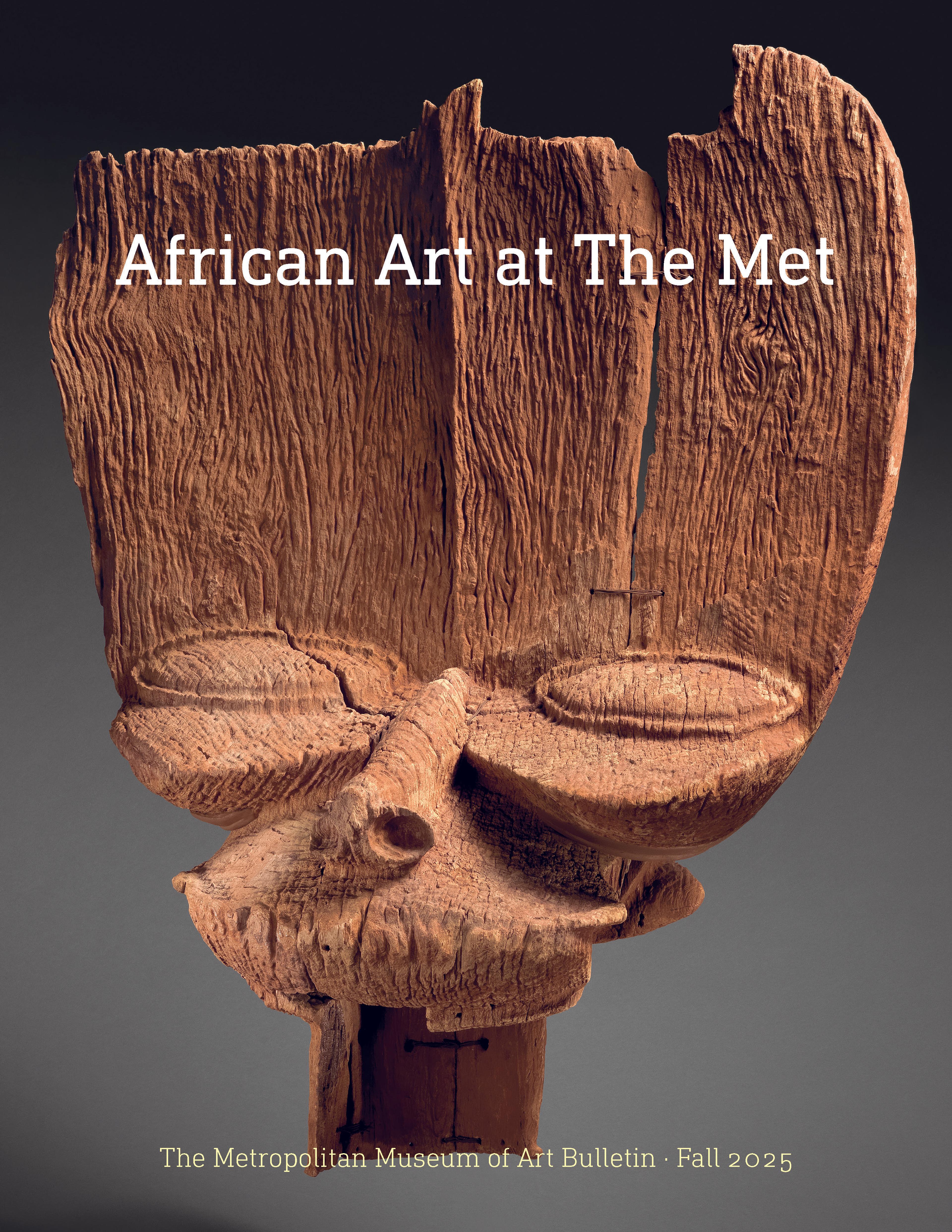Òpó (veranda post) with equestrian and female figure
This monumental work was one of a series of carved architectural supports designed for the exterior courtyard of a Yoruba palace. It was commissioned by a king from the most renowned master sculptor in the history of Yoruba art, Olowe of Ise.
The two-tiered composition embodies a formal dynamism that established Olowe's exceptional artistic reputation. Its principal personage, an equestrian warrior, is depicted frontally above a female caryatid with arms raised in three-quarter view. Through this contrast in their alignment, the figures at once reflect distinct attitudes while relating to each other fluidly. The compressed style of the upper half also contrasts with the greater degree of openness below. At the base two smaller figures radiate outward at oblique angles.
In addition to the inventive dynamism of their overall design, works by Olowe are noted for the attention given to surface detail. The mounted warrior holds a spear and pistol in either hand, and his vest, saddle, and horse's headgear are articulated through deeply carved linear motifs. While innovative in its formal interpretation, the subject of this work is a classic emblem of regional leadership. In Yoruba art such equestrian figures identify their patrons with martial conquest achieved through physical might.
The two-tiered composition embodies a formal dynamism that established Olowe's exceptional artistic reputation. Its principal personage, an equestrian warrior, is depicted frontally above a female caryatid with arms raised in three-quarter view. Through this contrast in their alignment, the figures at once reflect distinct attitudes while relating to each other fluidly. The compressed style of the upper half also contrasts with the greater degree of openness below. At the base two smaller figures radiate outward at oblique angles.
In addition to the inventive dynamism of their overall design, works by Olowe are noted for the attention given to surface detail. The mounted warrior holds a spear and pistol in either hand, and his vest, saddle, and horse's headgear are articulated through deeply carved linear motifs. While innovative in its formal interpretation, the subject of this work is a classic emblem of regional leadership. In Yoruba art such equestrian figures identify their patrons with martial conquest achieved through physical might.
Artwork Details
- Title:Òpó (veranda post) with equestrian and female figure
- Artist:Olowe of Ise (Nigerian, born Efon-Alaaye, ca. 1873–1938)
- Date:before 1938
- Geography:Nigeria, Efon-Alaaye region
- Medium:Iroko wood, paint, resin
- Dimensions:H. 71 x W. 11 1/4 x D. 14 in. (180.3 x 28.6 x 35.6 cm)
- Classification:Wood-Architectural
- Credit Line:Purchase, Lila Acheson Wallace Gift, 1996
- Object Number:1996.558
- Curatorial Department: The Michael C. Rockefeller Wing
More Artwork
Research Resources
The Met provides unparalleled resources for research and welcomes an international community of students and scholars. The Met's Open Access API is where creators and researchers can connect to the The Met collection. Open Access data and public domain images are available for unrestricted commercial and noncommercial use without permission or fee.
To request images under copyright and other restrictions, please use this Image Request form.
Feedback
We continue to research and examine historical and cultural context for objects in The Met collection. If you have comments or questions about this object record, please contact us using the form below. The Museum looks forward to receiving your comments.
